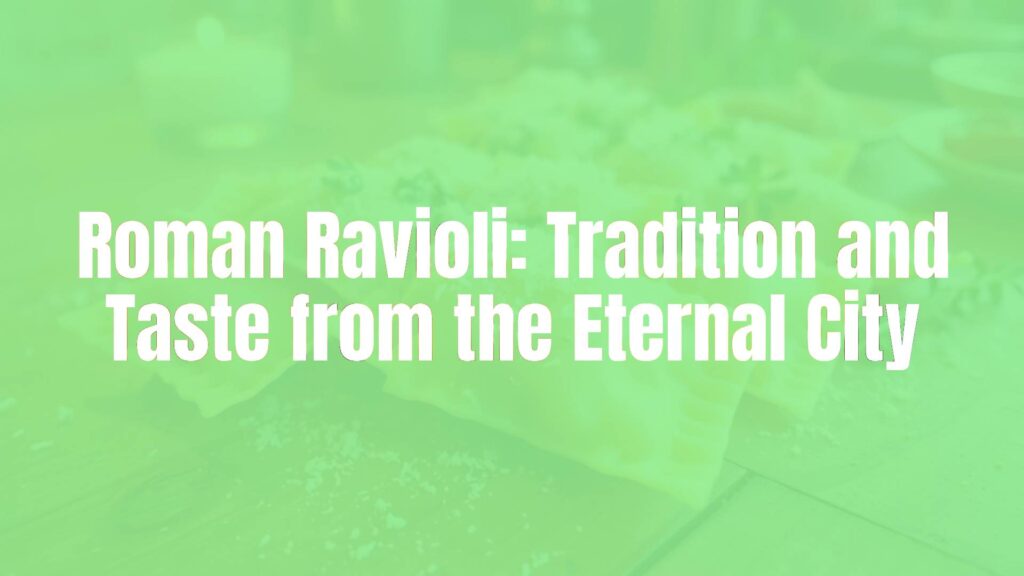Discovering Roman Ravioli: A Unique Take on Italian Pasta
Roman ravioli, a delightful staple from the heart of Italy, showcases the capital city’s affinity for simple but exceptionally flavorful food. Unlike the more widely known northern or Emilia-Romagna styles, Roman ravioli stand out due to their pared-back fillings, textural nuances, and subtle approach to seasoning, reflecting the essence of Roman culinary tradition.
Origins and Cultural Significance
While the history of filled pasta stretches across Italy, Rome’s version has evolved over centuries alongside the city’s changing tastes and influences. Roman ravioli have been enjoyed since at least the Renaissance, appearing on noble banquet tables as well as everyday Roman homes, particularly during festive occasions like Carnevale. The dish symbolizes both ingenuity and abundance, as cooks found creative uses for cheeses and greens from the Roman countryside.
Defining Characteristics
Roman ravioli are typically square or rectangular, with a thin, delicate pasta shell made from simple semolina flour and eggs. A defining feature is the lightness of the filling. Ricotta cheese, often blended with cooked spinach or chard, nutmeg, grated Pecorino Romano, and a touch of lemon zest, forms the classic core. Unlike some richer, meat-stuffed ravioli found in other regions, Roman ravioli champion subtlety, letting each ingredient shine.
Essential Ingredients
The foundation of Roman ravioli is notably straightforward, but the quality of ingredients is paramount. Traditional recipes call for:
- Pasta dough: Usually prepared with durum wheat semolina and fresh eggs.
- Ricotta: Fresh sheep’s milk ricotta is preferred for its mild, creamy character.
- Leafy greens: Spinach, Swiss chard, or a mixture of wild foraged greens.
- Pecorino Romano: This sharp, salty cheese is quintessentially Roman.
- Seasonings: Nutmeg, black pepper, and sometimes a hint of lemon zest.
Variations and Adaptations
Though the strongest tradition lies with the ricotta and greens filling, variations abound across trattorias and home kitchens. Some incorporate local herbs like marjoram or mint, while Roman-Jewish influences have led to fillings featuring fresh artichokes. For those seeking dairy-free options, mashed fava beans or potato purée can be used. The sauce is commonly a light butter and sage emulsion, a pomodoro (simple tomato sauce), or just a drizzle of extra-virgin olive oil and grated Pecorino Romano.
Serving Suggestions and Pairings
Roman ravioli are generally served as a primo (first course), often preceding a meat or fish main. They are best accompanied by a fresh green salad or seasonal roasted vegetables. To complement the light but savory flavors, pair with a crisp white wine from Lazio, such as Frascati, or a young, floral Trebbiano.
Roman Ravioli in Today’s Cuisine
This dish endures as a symbol of Roma’s culinary identity: vibrant, approachable, and steeped in local tradition. Modern chefs and home cooks continue to reinterpret Roman ravioli, borrowing from both classic and contemporary influences to craft a dish that speaks to both heritage and creativity.

